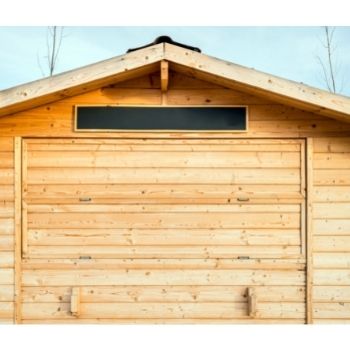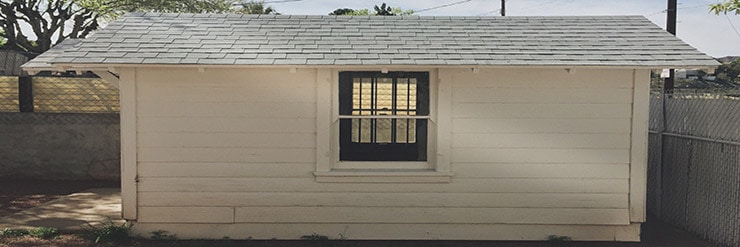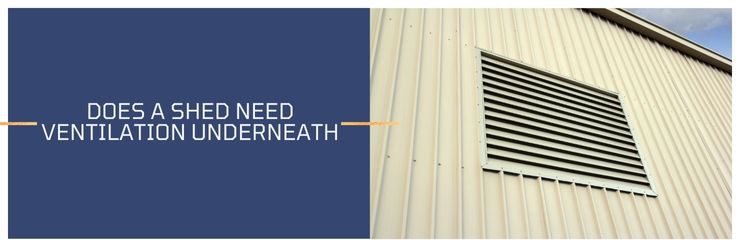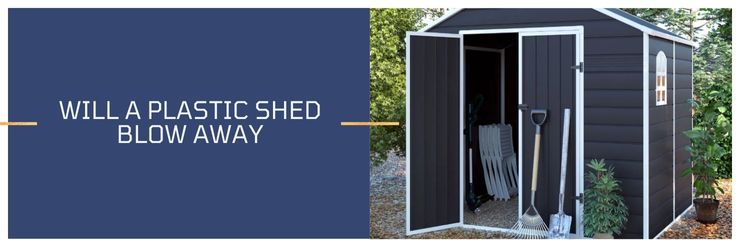When you’re building or buying a shed, one of the most important decisions you’ll make is what kind of roof to put on it. There are a few different options, and each has its own benefits and drawbacks. One question people often ask is Does a shed roof need an overhang?.
A shed roof does not inherently need an overhang; it depends on the specific design of the roof and the climate where it is located. An overhang can help protect the roof from weather damage and extend its life, but it also adds extra cost and weight to the structure.
Let’s take a look at the pros and cons of overhangs on sheds and see if they’re necessary at all, i will even give you tips on how to incorporate one on your shed.
Does a Shed Roof Need an Overhang
Most people believe that a shed roof needs an overhang in order to keep the rain and snow from damaging the shed. However, this is not always the case. In fact, many shed roofs are built without an overhang and they work just fine.
There are a few things to consider when deciding whether or not to include an overhang on your shed roof.

First, consider the climate where you live. If you live in an area with a lot of snow and rain, then an overhang will help protect your shed from the elements. However, if you live in a dryer climate, then an overhang may not be necessary.
Second, think about the style of shed you want. A traditional shed roof usually has an overhang, while a more modern shed roof might not.
Finally, consider the cost of building an overhang. An overhang can add to the cost of the shed, so if you are on a budget, you may want to forego the overhang in order to save some money.
Is Overhang Essential for a Shed
When thinking about a foundation’s structure, the overhang is not the first thing that comes to mind. However, when you realize the important benefits that come with an appropriate amount of overhang on your shed, you may change your tune. Check out some of the incredible benefits of owning a shed overhang below.
- Increases longevity -By protecting the shed’s foundation and the shed itself from the elements, it may add a few extra years to the life span of your shed.
- Ultimate Weather Protection – Overhang not only presents a charming aesthetic, but it also provides protection from harsh weather elements such as rain, debris, and snow.
- Safely Redirects Water – This simple addition will help shield your windows, walls, and doors from rain, and direct the water away from your shed’s foundation.
- Keep Work Temperatures Consistent – A shed overhang will be essential in the summer months for shielding harmful rays from entering your shed and raising the temperature significantly. In the winter months, when the sun is lower, sunlight will be able to enter your windows and provide warmth against the cold weather conditions.
- Add Storage Space – Many people add a significant amount of overhang on one side of their shed, also known as a “lean-to.” This may provide additional storage space for firewood, lawn equipment, or other storage items that can be left in outdoor conditions.
- Stylize Your Shed – If your shed does not have an overhang, you may want to consider adding it to stay away from that flat, boxy look your shed will have with no overhang. Do not let your shed be an eyesore to your neighbors. Instead, invest in a shed overhang.
There are many other potential benefits to incorporating a shed overhang, such as relief from harmful sun rays which may help to keep the shed’s overall work temperature down.
Proper overhang helps maintain the outer walls from rot, paint damage, and improves the overall long-term health of your shed foundation.
As you can see, having a little bit of overhang can go a long way, and will help protect your shed from harmful elements such as sunlight or rain that may cause damage over time.
It may be a short-term lifesaver when working on a rainy day and you must unlock your shed, for the roof overhang will protect you from the rain while you are unlocking the door.
Related article:
What Are the Different Types of Overhang
Having an overhanging roof is essential for maintaining the temperature and longevity of your shed, but what are the different ways in which you can employ a roof overhang? Are certain types of roof overhang options better for different shed designs?
Learn the answer to these questions in our comprehensive overhang gallery below:
| Type of roof | Style of roof |
|---|---|
| Flat Shed Roof | Slightly Wider Overhang Acceptable, Cheapest Option, Ideal for Storage, Overhang Extends Past All Four Walls |
| Gabled Roofs | Extends Beyond Wall Caps, Angled Roof Overhang, Narrow Maximum Width, Easy to Construct or Add On |
| Slanted Shed Roof | Redirects Water Away from Foundation, Facilitates Proper Drainage, Added Storage Space, Can Be Medium or Long in Length Comparable to Other Designs |
| Gambrel Roof | Flared Eaves for Steep Angle, Narrow Design, Provides Cover Over Shed Entrance |
| Lean-to Shed Roof | Attached to a Larger Structure, Redirects Runoff, Provide Additional Storage, Length Is Determined By Design and Optimal Storage Use |
There are as many overhang design options as there are sheds. Likewise, there is no straightforward answer to how much overhang is necessary for different shed designs because each shed is different and will have different weather challenges. Decide which roof design is best for your weather and storage needs, and make sure there is a proper overhang on the design you choose.
Can You Add an Overhang to an Existing Shed
There are different ways in which you can add an overhang to a shed. One simple way is by extending each rafter beyond the parameters of the four existing walls and creating something many builders call “rafter tails” on each side for eave overhangs.
Maybe you have a shed that does not have a proper overhang because you were getting a deal, inherited it from previous owners, or simply overlooked that feature when picking out your shed design.
Adding an overhang on most shed roofs is an easy task, and you may want to consider the advantages that you will receive from having a proper overhang on your shed.
Creating rafter tails by extending each rafter is an easy way to add some extra overhang to your shed.
Once the rafter tails are installed, cut them down to the appropriate overhead length for your shed.
A rake overhang will be essential in protecting your window and door areas at each end of your shed.
How Much Overhang Should a Shed Roof Have
Overhang sizes for eaves on most shed types will usually lie between one and two feet (1’-2’) while the rake overhang will usually be less than 1 foot (1′)
Overhangs can vary from a few inches to a few feet, depending on preference. However, the suggested width of an overhang is between 12 and 18 inches for eaves, and no more than 8 inches for rakes. That said, overhangs can extend as far as 2 feet without the need for external supports.
So, when it comes to deciding how much overhang to have on your shed, it really depends on what you intend to use the shed for and what looks best to you. Ultimately, the size of your overhang is a matter of personal preference.
With an overhang of 2 feet on a shed roof, it should protect the shed from weather damage and also help to keep the shed cooler in the summer months.
Why the Roof Overhang is Important to Your Shed
A roof overhang is important to your shed for a few reasons.
Firstly, it helps to protect the door and windows from the elements.
Secondly, it provides extra stability in high winds.
Thirdly, it helps to keep the shed cooler in summer and warmer in winter.
Finally, it can help to keep the rain off the door and windows and stop leaves and other debris from clogging up the gutters.
Overall, it is important to weigh the pros and cons of having an overhang on your shed roof before making a decision.
The Cost of Adding an Overhang to a Shed

If you’re considering adding an overhang to your shed roof, the cost is probably one of your main concerns. But the truth is, the cost of adding an overhang is nominal compared to the benefits it provides.
The cost will depend on a number of factors such as size and type of shed, but you will look to be paying $200 to $300 to extend the overhang on your shed.
Providing a protective overhang from the elements, can also help keep your shed cooler in the summer and warmer in the winter. If you live in an area with a lot of snow, an overhang can also help prevent your shed roof from collapsing under the weight of the snow.
For an extra few hundred bucks, it will be well worth the cost.
Final Thoughts
We looked at, does a shed roof need an overhang? We learned about the importance of having a proper overhang for your shed and how to construct an overhang on an existing shed, nothing can stop you from getting the most out of your storage space.
Do not let your shed be a stuffy workroom that you do not want to work in or even look at for that matter. Instead, maintain the temperature of your storage space and ensure proper drainage with a functional gable and rake overhang.
Although overhang may seem like a small detail that can be overlooked, it will make a huge difference in the performance and longevity of your storage space.
Roof overhangs effectively disperse the water on your roof to promote proper drainage, protect doors and windows from debris or harsh windy rainfall, and maintain the proper temperatures to keep your beloved personal belongings safe. Give your shed the treatment it deserves and invest in overhang for your shed today!






